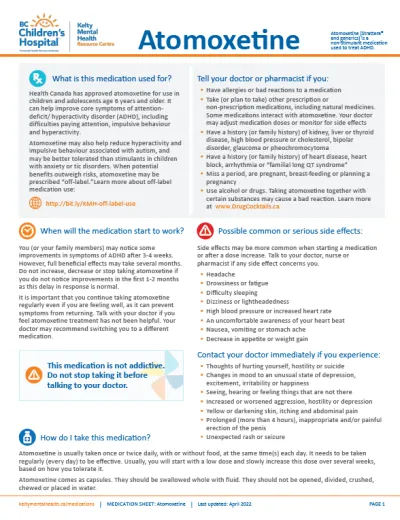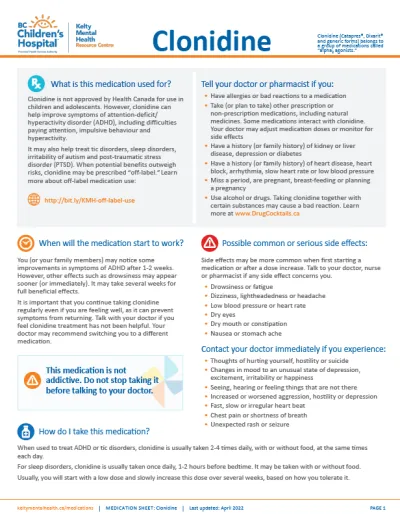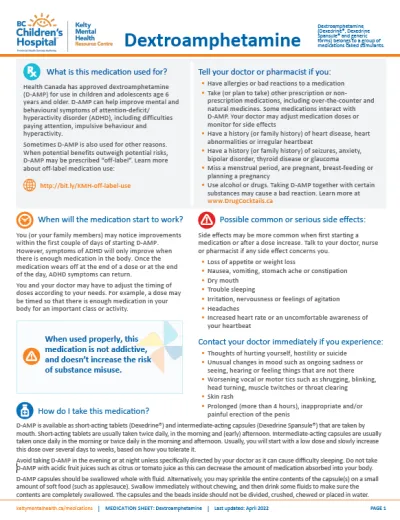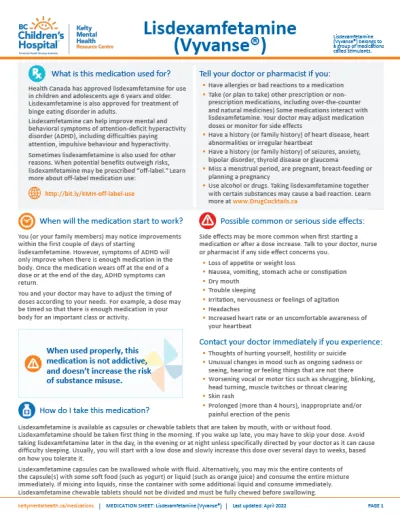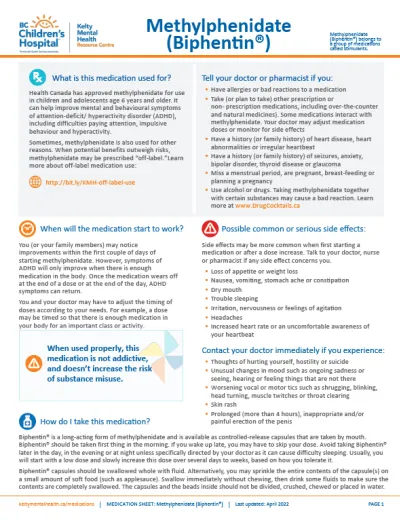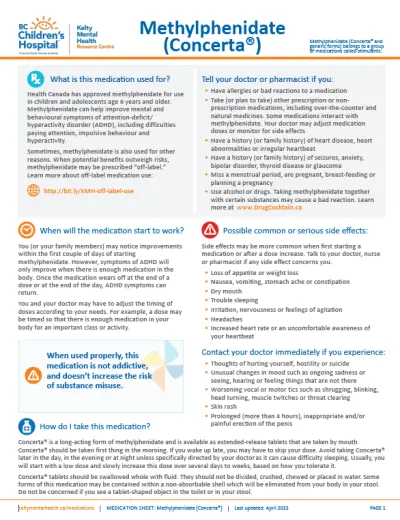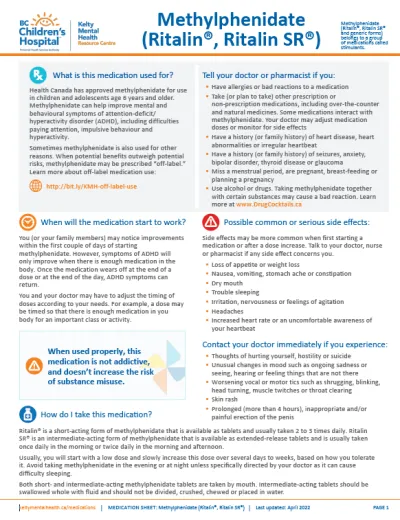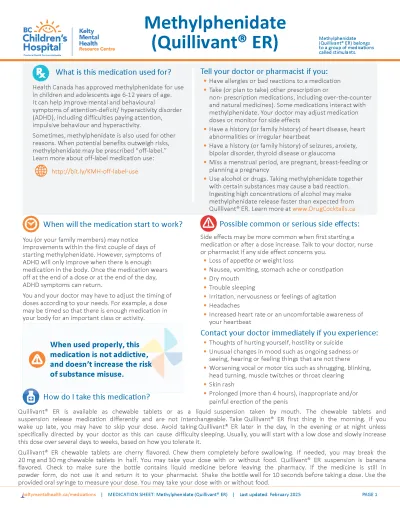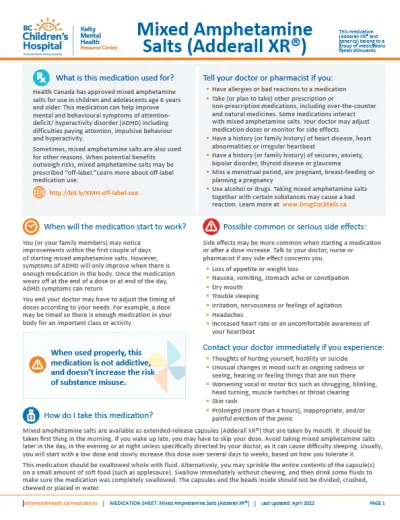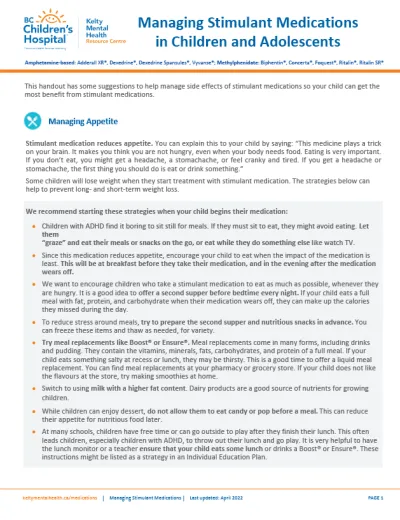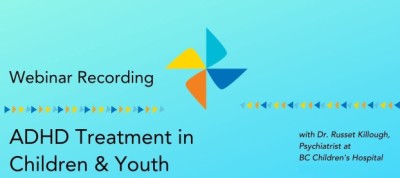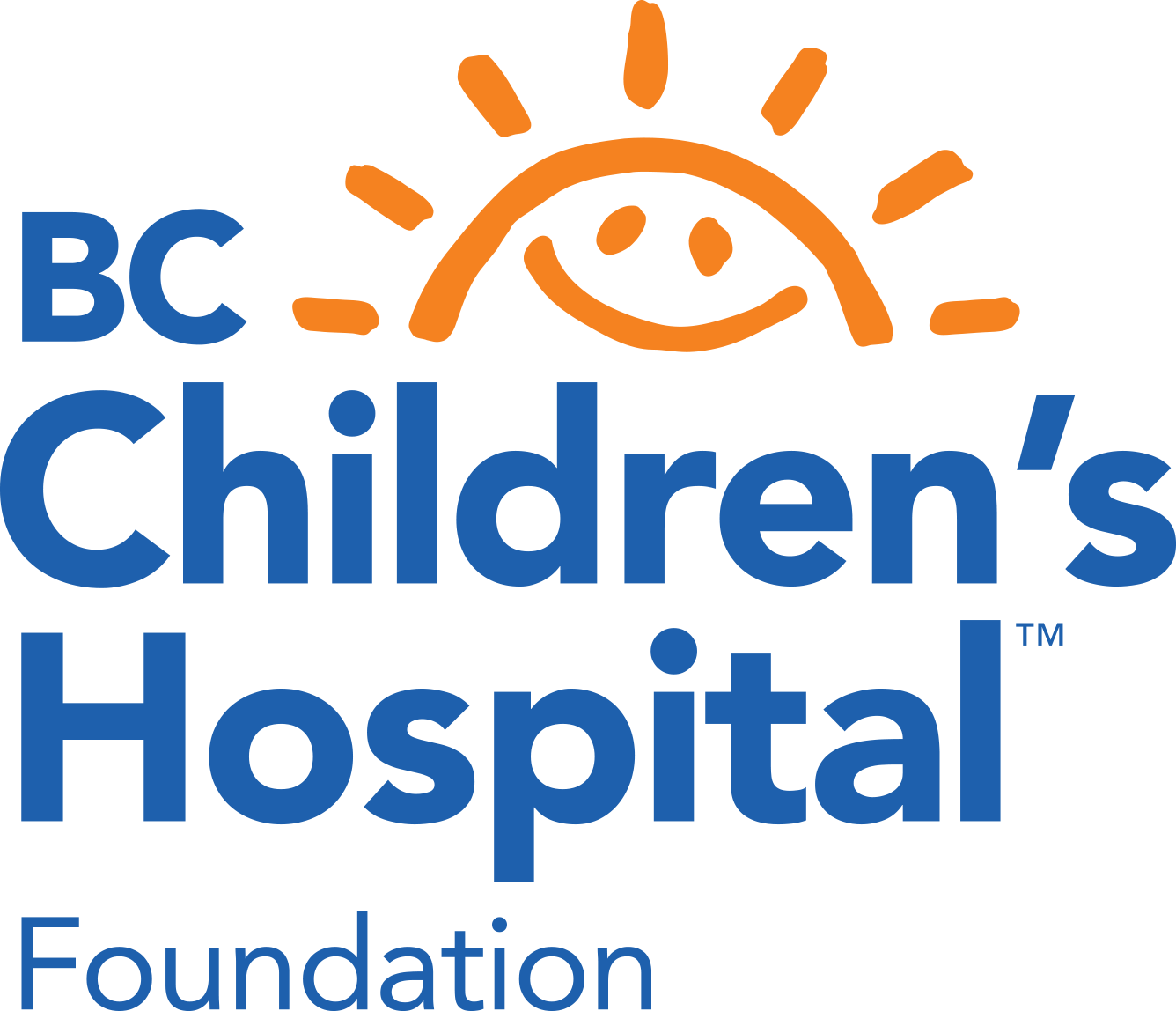ADHD Medications
An important part of managing Attention Deficit/ Hyperactivity Disorder (ADHD) is the use of medication. The medications currently in use do not cure ADHD. The ultimate goal with medication is to improve functioning by reducing the core symptoms of ADHD (inattention, hyperactivity, and impulsivity). Stimulant medications for ADHD work relatively quickly but have several possible side effects and risks to consider.
Atomoxetine (Strattera®)
Atomoxetine is a non-stimulant medication used to treat ADHD.
Clonidine (Catapres®, Dixarit®)
Clonidine is a non-stimulant medication used to treat ADHD, tic disorders, irritability of autism and disruptive behaviour disorders.
Dextroamphetamine (Dexedrine®, Dexedrine® Spansule)
Dextroamphetamine is a stimulant medication used to treat ADHD.
Guanfacine XR (Intuniv XR®)
Guanfacine XR ia a long-acting non-stimulant medication used in the treatment of ADHD, disruptive behaviour disorders and tic disorders.
Lisdexamfetamine (Vyvanse®)
Lisdexamfetamine is a long-acting stimulant medication used to treat ADHD.
Methylphenidate (Biphentin®)
Methylphenidate is a long-acting stimulant medication used to treat ADHD.
Methylphenidate (Concerta®)
Methylphenidate is a long-acting stimulant medication used to treat ADHD.
Methylphenidate (Foquest®)
Methylphenidate is a long-acting stimulant medication used to treat ADHD.
Methylphenidate (Ritalin®, Ritalin SR®)
Methylphenidate is a stimulant medication used to treat ADHD.
Methylphenidate (Quillivant® ER)
Methylphenidate is a long-acting stimulant medication used to treat ADHD.
Mixed Amphetamine Salts (Adderall XR®)
Mixed Amphetamine Salts is a long-acting stimulant medication used to treat ADHD.
Managing Stimulant Medications in Children and Adolescents
This document is to provide parents and caregivers with a better understanding on stimulant medication and how to manage the side effects so your child can gain the most benefits.
ADHD Treatment in Children & Youth: Webinar Recording
Webinar recording for parents & caregivers from the ADHD Treatment in Children and Youth webinar. To see the accompanying presentation slides, click here (Feb. 10, 2021).
